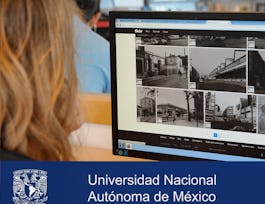The Talmud is one of the richest and most complicated works of literature the world has ever known. Since being composed around 1500 years ago it has inspired not only religious reverence but significant intellectual engagement. In this course learners will be introduced to the unique characteristics of this text and the challenges that inhere in studying it while studying a chapter of the Talmud. Students of the course can expect to develop an appreciation for how the Talmud works and why it continues to inspire religious and intellectual devotion. They will be challenged to employ critical reading skills and to analyze legal and historical concepts.



The Talmud: A Methodological Introduction

Instructor: Barry Scott Wimpfheimer
Sponsored by Syrian Youth Assembly
18,863 already enrolled
(288 reviews)
Details to know

Add to your LinkedIn profile
8 assignments
See how employees at top companies are mastering in-demand skills


Earn a career certificate
Add this credential to your LinkedIn profile, resume, or CV
Share it on social media and in your performance review

There are 8 modules in this course
The Talmud is a canonical work of Jewish literature that collects the ideas and arguments of rabbis who lived between the first and eighth centuries CE. This module explains the basics of how the Talmud was composed, why the Talmud matters and how it is accessed today.
What's included
5 videos9 readings1 assignment
The Talmud relies heavily on the authority and substance of its canonical predecessor, the Hebrew Bible. This module charts a trajectory from the biblical origins of the treatment of false testimony in Deuteronomy through its treatment within the second temple apocryphal book Susannah and the early Rabbinic law code, the Mishnah.
What's included
4 videos5 readings1 assignment
Interpretation is a major component of Rabbinic literature and the Talmud. This module introduces the specific features of Rabbinic interpretation of the Hebrew Bible—its assumptions and its reading tools.
What's included
3 videos4 readings1 assignment
Textual Criticism is a form of reading that looks to explain the meaning of a text by figuring out aspects of its composition history. This module will show how Talmudic passages are typically constructed and what scholars can do to figure out the original meaning of a text.
What's included
3 videos4 readings1 assignment
The historical range of the different centuries of rabbinic literature makes it possible to take note of changes in the ways the different rabbis thought about the Bible and law. This module will demonstrate how later rabbis have a more abstract way of thinking about law while simultaneously having a more restrictive way of reading the Bible.
What's included
3 videos3 readings1 assignment
Rabbinic literature consists of multiple works in three genres—Midrash, Mishnah and Talmud. This module introduces each of these different genres with a comparative analysis of texts related to false testimony in works of each type.
What's included
4 videos5 readings1 assignment
The Talmud contains many stories that feature historical figures from the rabbinic period. In this module we will demonstrate the difficulty of reading these stories as history and model the use of literary tools for reading such materials.
What's included
3 videos4 readings1 assignment
While some of the material we have studied is unsettling, we need to bear in mind that much of it is rabbinic idealization or fantasy. This module goes through both the fantasy of rabbinic power and the realities of the importance of the Talmud in the post-Talmudic age.
What's included
3 videos3 readings1 assignment
Instructor

Offered by
Why people choose Coursera for their career




Learner reviews
288 reviews
- 5 stars
70.83%
- 4 stars
20.48%
- 3 stars
5.90%
- 2 stars
1.73%
- 1 star
1.04%
Showing 3 of 288
Reviewed on Sep 17, 2016
very interesting, challenging, but I find it hard to understand the intonation (highs and lows) of the ph
Reviewed on Aug 28, 2017
This is a very well constructed introduction to the Talmud but I think it would be improved if it made more demands on the student in terms of reading assignments and exercises.
Reviewed on May 20, 2016
An outstanding look into the complexities and nuances of the the Talmud. Well-taught, thought-provoking, interesting...
Recommended if you're interested in Arts and Humanities

Commonwealth Education Trust

Universidad de Palermo

American Psychological Association

Universidad Nacional Autónoma de México

Open new doors with Coursera Plus
Unlimited access to 10,000+ world-class courses, hands-on projects, and job-ready certificate programs - all included in your subscription
Advance your career with an online degree
Earn a degree from world-class universities - 100% online
Join over 3,400 global companies that choose Coursera for Business
Upskill your employees to excel in the digital economy


